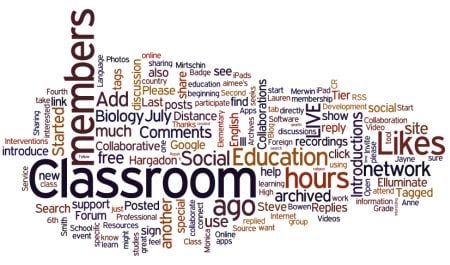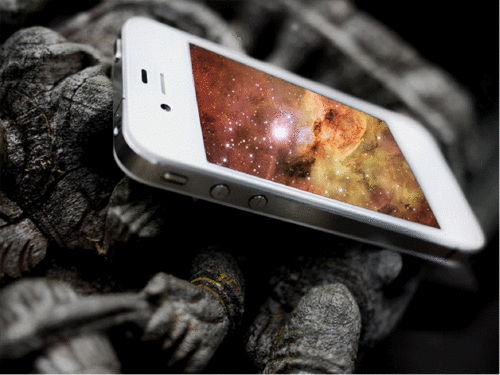Audio, Pictures and Video.
| Education has evolved to the point where methods focusing on hard copy approaches like text book reading and chalk and talk are seen as outdated and ineffective. It seems that learning is taking place on slideshows, websites, videos and visual aids. The type of resources that allow students to interact and manipulate the content that is being shown to them. |
 |
| Using Digital tools in not only an easy way to convery content and information to students, it is also an exciting way to present it. Using or even creating your own videos, podcasts, images and games will hook students and keep them engaged. It is so critical to use these digital tool as each student has unique needs and learning styes.
|
 |
Visual learners are able to retain, re call and reflect on information most effictivley when they are given a picture, diagram, graph or chart, mind map or videos and film. These students cannot process information by just listening or touching. This means that tasks can be created for these students that involves creating images. There are amazing programs that can be used.
- Photoshop
- Flickr, Tiny Pic and Photobucket
- Abode
- BeFunky
- Youtube
I have included a list of links below for image creating/editing.
|
These students are able to learn best through listening. These students would benefit from pod casts, audio files as well as youtube and other video sources. They would also be able to listen to teachers or other students talk. For these students finding recorded texts or books would also be beneficial. There are amazing programs that can be used.
- Sound cloud
- Itunes/android app store
- Pod casts
- Youtube
I have included a list of links below for image creating/editing. |
 |
 |
These students benefit from physically touching or manipulating content. This is a very common learning style for students and is also a very easy to cater to style when teachers are using digital tools. There a many different progrmas for students to create games as well as play them, and hundreds of interactive learning sites for students.
- App store and educational apps
- iPads and tablets
- Online Games
- Interactive sites.
I have included a list of links below for image creating/editing.There are amazing programs that can be used.
|
Links for Visual Learners.
- http://youtube.com
- http://photobucket.com
- http://tinypic.com
- http://befunk.com
- http://makeagif.com/
- http://voki.com
|
 |
Links for Auditory Learners.
- https://soundcloud.com/
- http://soundation.com/
- http://audacity.sourceforge.net/
- http://download.cnet.com/Free-Sound-Recorder/3000-2170_4-10698910.html
- http://online-voice-recorder.com/
- http://youtube.com
- http://voki.com
|
 |
Links for Kinesthetic Learners.
- http://weebly.com
- http://www.leapfrog.com/gaming
- http://www.knowledgeadventure.com/default.aspx
- http://www.playkidsgames.com/
- http://www.learninggamesforkids.com/
- http://funschool.kaboose.com/
|
 |
I have also done a lot of image resizing in this blog, while you could use befunky or tinypic or a number of other programs, I have been able to resize all my GIFs AND images AND youtube videos by using HTML coding Like so ; <img alt="This is where the name of the image goes (So if the user hovers their mouse of the picture, what ever you write in here will appear) " height="THE HIGHT OF THE IMAGE WRITTEN IN PIXELS (I usually use about 300)" src="The URL of the image goes here, this way I don't have to save, re upload then link a picture, I can just pull it straight from the web." width="THE WIDTH OF THE PICTURE (To stretch across my page after factoring the padding for my tables I use about 500 pixels.) " />
References
BenZion(Westreich), Galeet. 1999. An analysis of kinesthetic learners' responses: teaching mathematics through dance. Doctoral Dissertation. American University, Washington D.C.
Images sourced from google images.
Kostelnik, M.J., Soderman, A.K., Whiren, AP. (2004). Developmentally Appropriate Curriculum: Best Practices in Early Childhood Education (3rd ed.). Columbus: Pearson, Merrill Prentice Hall.
Leite, Walter L.; Svinicki, Marilla; and Shi, Yuying: Attempted Validation of the Scores of the VARK: Learning Styles Inventory With Multitrait–Multimethod Confirmatory Factor Analysis Models, pg. 2. SAGE Publications, 2009.



 Previously discussed
Previously discussed
 Previously discussed
Previously discussed
 Previously discussed
Previously discussed
 Previously discussed
Previously discussed

 By far my favourite tool! The opportunities for the collaboration of the class are limitless. Creating blogs for students to follow, or share and discuss content. It allows for all hours learning and communication in a safer online environment. I love the idea of blogging and will certainly use it in the futures.
Reflecting on this, my favourite tool, and will definitely be using it!!!.
By far my favourite tool! The opportunities for the collaboration of the class are limitless. Creating blogs for students to follow, or share and discuss content. It allows for all hours learning and communication in a safer online environment. I love the idea of blogging and will certainly use it in the futures.
Reflecting on this, my favourite tool, and will definitely be using it!!!. 














